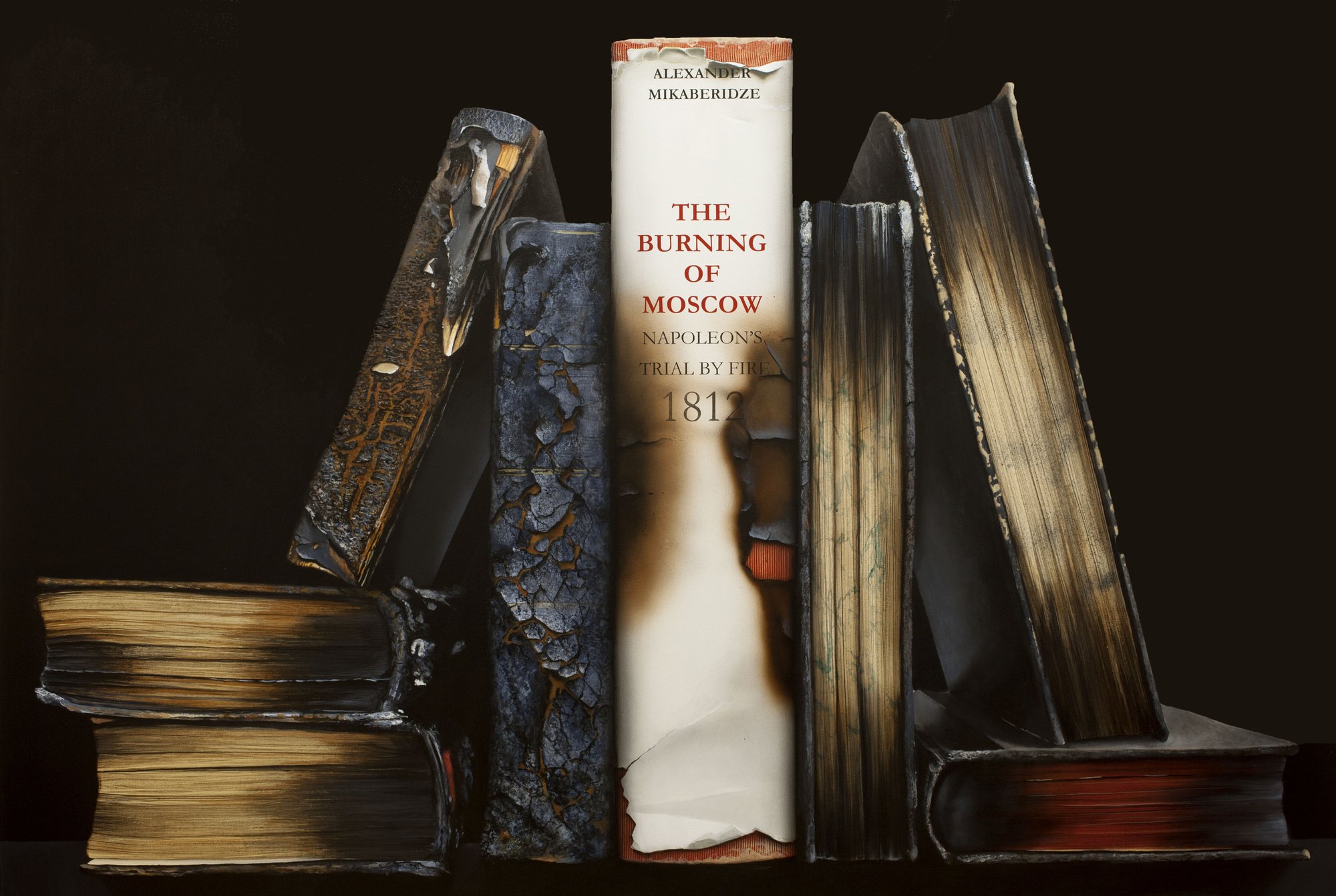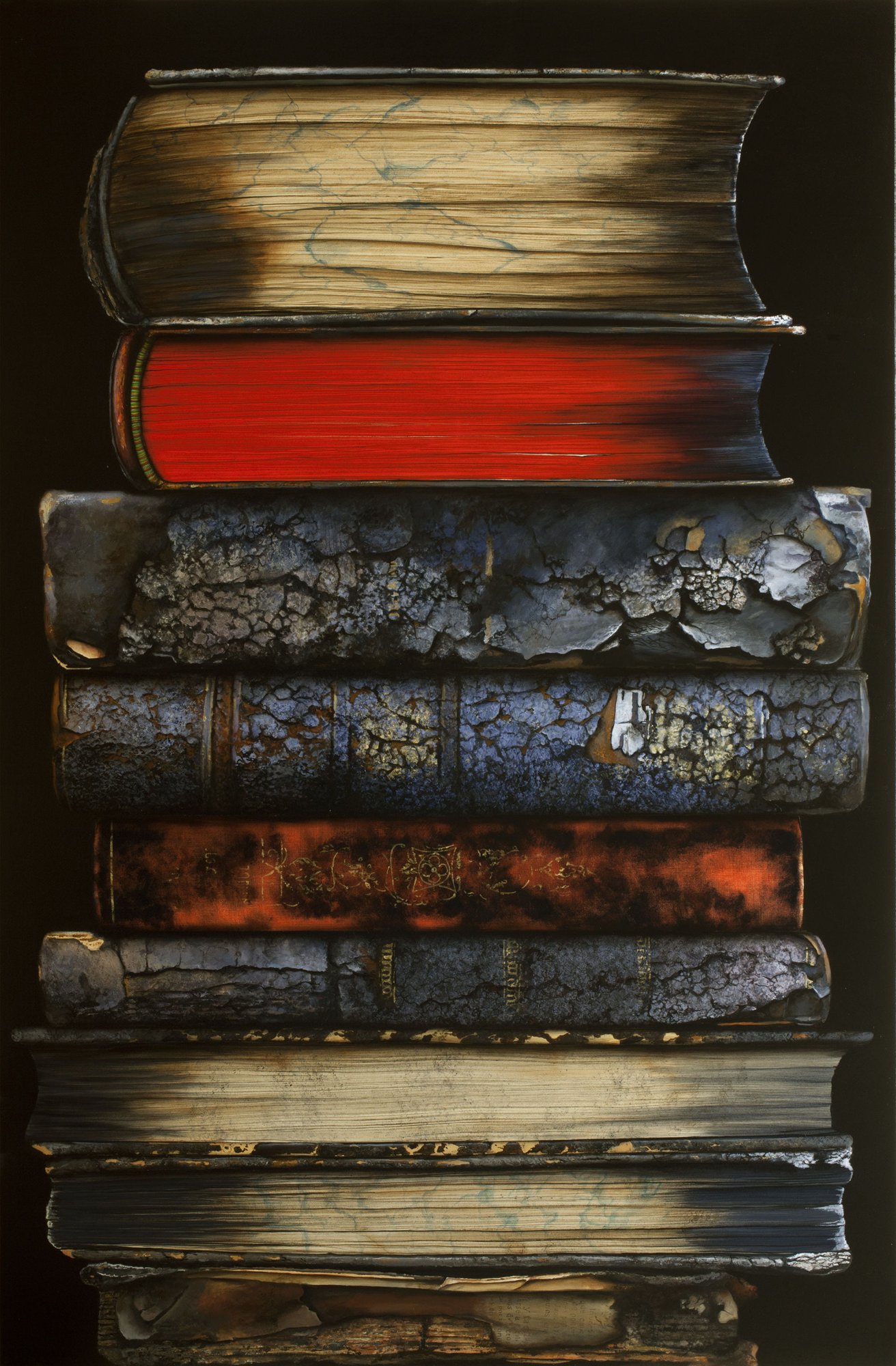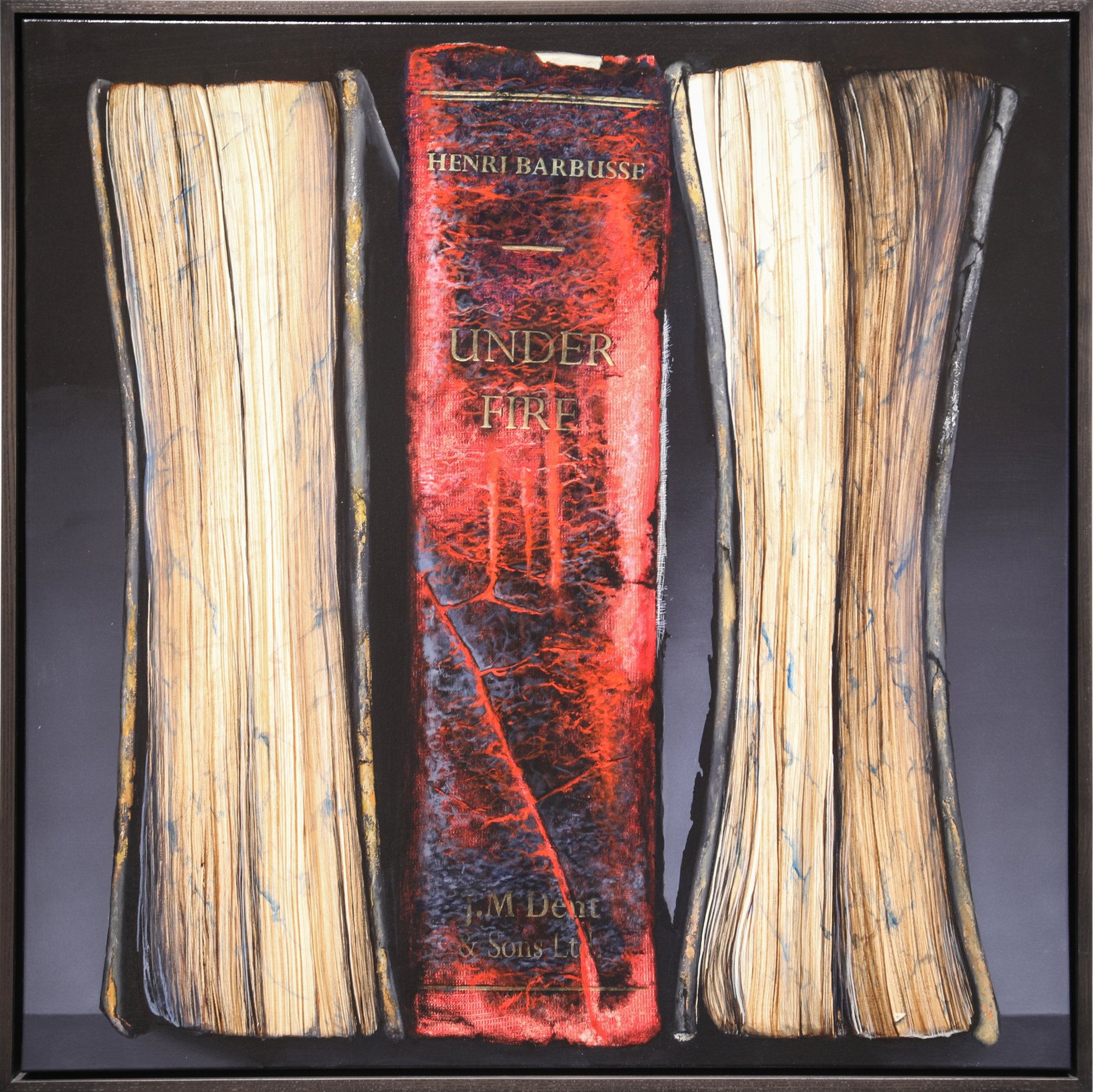Paul Beliveau
Born in Quebec City, Canada, in 1954, Paul Béliveau attained his Bachelor’s degree in Visual Arts from Laval University in 1977. Recognized for his expertise in drawing, engraving and painting he has since then had more than a hundred solo exhibitions across Canada, the United States and Europe. The recipient of numerous prizes in visual arts and of multiple grants from the Canada Council has taken part in several committees and juries as specialist in the visual arts. His works can be found in many public and private collections throughout the country and has to his name some fifteen works of art integrated into architectural sites.
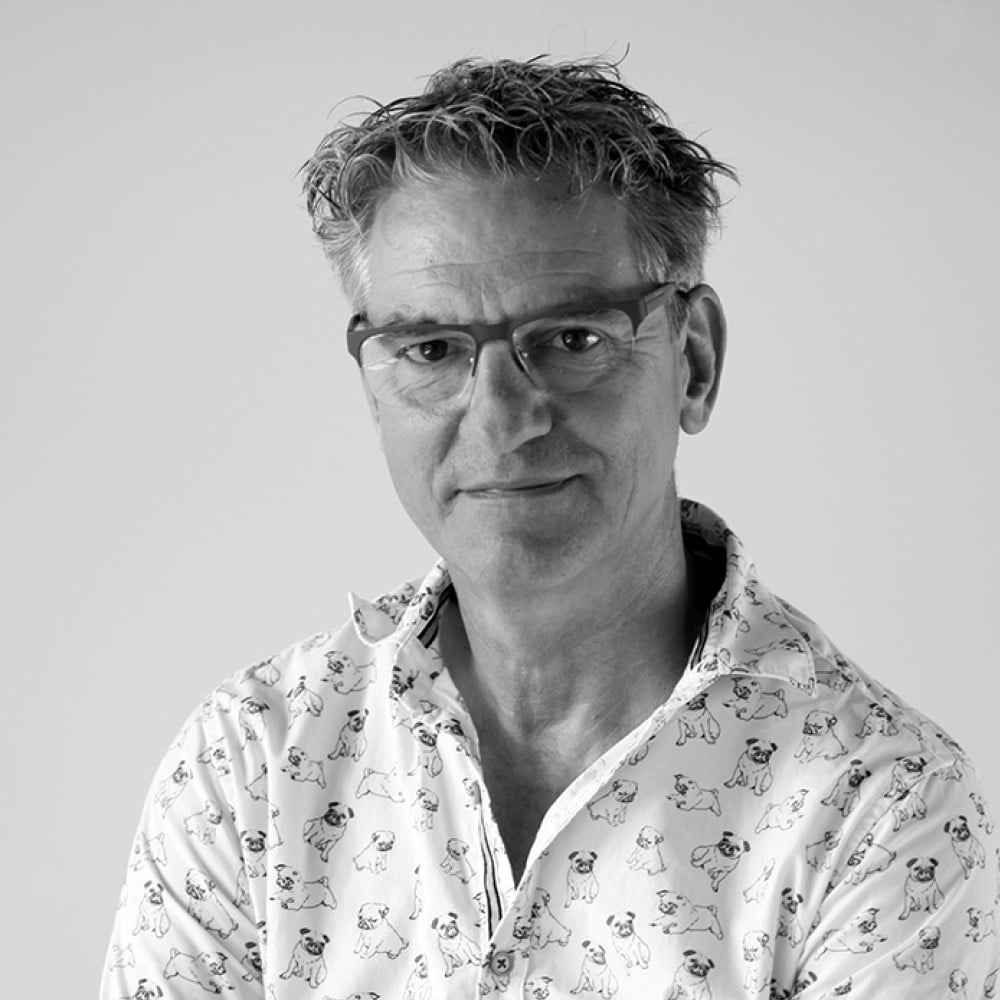
AVAILABLE WORKS
Our inventory changes frequently. Please view available works below or click FOLLOW to be notified of new arrivals.
FOLLOW THIS ARTIST
Interested, but not ready to move forward yet? Want to be the first to know about new arrivals? Follow this artist to be notified.
FOLLOWFOLLOW THIS ARTIST
Our inventory changes regularly. Join our private collector list to receive early previews of new arrivals, updates on exhibitions, and occasional exclusive opportunities — thoughtfully curated for those who follow this artist.
ARTIST STATEMENT
Vanitas series is meant to be deeply humanistic. Books are gathered side by side and presented by their spine, allowing the images and titles to speak, thus showing that behind that front, words, sentences and chapters enter into dialogue. Vanitas is about a living culture one is unable to see but rather desire.
« In my painting I like not to randomly accumulate images but rather converge towards an organised assemblage of elements responding to each other and building upon each other. In this work centered around citation, Vanitas (formerly called Les humanités and then Les rencontres) is a logical result of my relation with objects, the books more specifically, which is a clear demonstration of human knowledge, of thought transference which survives mankind. I like to use painted books as a strategy against loss, eventhough worn books, metaphorically, evoque the passage of time and reveal one's own finiteness. »
"…In Paul Béliveau's paintings, the play of juxtaposition is not the result of a random accumulation of images. Rather, it converges towards an idea of structure or of system, an organised assemblage of elements responding to each other and building upon each other… The artist, it should be noted, has always been fascinated by architecture, by the way machines work and by industrial structures, which he compares, in fact, to living organisms…
…Paul Béliveau's works do not represent terminal points. On the contrary, they reveal themselves to be outlines, sketches, creations which are constantly evolving…The meanings conferred on the images reproduced by the artist are therefore always relative…The artist's particular approach accentuates the phenomenological character of an aesthetics which reflects explicitly the contingent nature of existence…It is in this formal and conceptual coherence that the specificity of Paul Béliveau's work resides. His paintings, which live only through the processes of creation or of apprehension, invite us to transcend perceptible reality by directing our gaze towards the continuity of things, towards something that--paradoxically--seems to withstand the action of time and which could perhaps be called "humanity." 1
1 Extract from The Theatre of Affinities or How to Transcend Appearances by Dany Quine
take a look
Video
Video of "Vanitas 17.12.06 (Modern Art)" in our Village Court Gallery.
Biography
Born in Quebec City, Canada, in 1954, Paul Béliveau attained his Bachelor’s degree in Visual Arts from Laval University in 1977. Recognized for his expertise in drawing, engraving and painting he has since then had more than a hundred solo exhibitions across Canada, the United States and Europe. The recipient of numerous prizes in visual arts and of multiple grants from the Canada Council has taken part in several committees and juries as specialist in the visual arts. His works can be found in many public and private collections throughout the country and has to his name some fifteen works of art integrated into architectural sites.
-
Education
1977
Baccalauréat en arts visuels / Graduated in visual arts (Université Laval, Québec)
-
Solo Exhibitions
2019
Thompson-Landry Gallery Toronto
Galerie Duran/Mashaal, Montréal
Galerie St-Laurent+Hill, Ottawa (DUO Show)
Gilman Contemporary, Ketchum, ID
2018
Arden Gallery, Boston (duo avec / with Joanne Mattera)
Centre culturel Yvonne L. Bombardier, Valcourt, Mémoires émergentes
Musée Marius-Barbeau, Saint-Joseph de Beauce, Les réminiscences
Galerie Michel Guimont, Québec, Les intermitences
2017
Arden Gallery, Boston
Duran Mashaal, Montréal
Stricoff Fine Art, New York
2016
Musée des beaux-arts de Sherbrooke
2015
Plus One Gallery, London, UK
Winsor Gallery, Vancouver
Galerie Louise-Carrier, Lévis (duo avec / with Antoine Lortie)
Arden Gallery, Boston
2014
Stricoff Fine Art, New York
2013
Arden Gallery, Boston
Galerie de Bellefeuille, Montréal
2012
Stricoff Fine Art, New York
2011
Espace Parenthèse, Québec, Confins des Temps - Rétrospective de l'oeuvre de Paul Béliveau
Galerie Tzara, Québec (DUO), Kaléidoscopie : les frissons du réel
Plus One Gallery, Londres
Stricoff Fine Art, New York
Couture Galleri, Stockholm
2010
Galerie de Bellefeuille, Montréal
Stricoff Fine Art, New York
2009
Galerie de Bellefeuille, Montréal
Arden Gallery, Boston
Winsor Gallery, Vancouver (DUO Show)
2008
Stricoff Fine Art, New York
Galerie Bellattitude, Québec
2007
Arden Gallery, Boston, Paul Béliveau
Robert Kidd Gallery, Birmingham, Recent Works
Galerie de Bellefeuille, Montréal, Paul Béliveau
2006
Stricoff Fine Art, Ltd, New York, New Works
2005
Drabinsky Gallery, Toronto, Recent Paintings
Galerie de Bellefeuille, Montréal, Œuvres récentes - Recent Works
Arden Gallery, Boston, New Paintings
2004
Centre d’art de Baie-Saint-Paul, Apparence de faux
2003
Galerie de Bellefeuille, Montréal, Les humanités
Galerie Drabinsky, Toronto, Les humanités
2001
Galerie de Bellefeuille, Montréal, Le théâtre des correspondances
Drabinsky Gallery, Toronto, Œuvres récentes - Recent works
Galerie St-Laurent-Hill, Ottawa, Œuvres récentes - Recent works
Galerie Estampe Plus, Québec, Les chroniques
2000
Drabinsky Gallery, Toronto, Cantus
1998
Galerie Estampe Plus, Québec, Les régénérescences
15e Festival international de musique actuelle de Victoriaville
1996
Drabinsky/Friedland Galleries, Toronto, Les déplacements
Galerie Éric Devlin, Montréal, Les déplacements
Galerie d'art du Centre culturel de l'Université de Sherbrooke, À perte de vue
Moulin des Jésuites, Galerie du Trait-Carré, Bibliothèque de Charlesbourg, Maison Paradis à Charlesbourg, L'oeuvre du temps
Centre national d'exposition, Jonquière, Les apparences
1995
Centre d'exposition des Gouverneurs, Sorel, Les apparences
Galerie L'Autre Équivoque, Ottawa
Galerie Expression, Saint-Hyacinthe, Alexandria
Galerie Estampe Plus, Québec, Le bonheur envisageable
Galerie Trois Points, Montréal, Les hommages
Galerie L’Autre Équivoque, Ottawa, Les apparences
1992
Drabinsky Gallery, Toronto, Les apparences
Galerie Presse-Papier, Trois-Rivières, Les apparences
Galerie Trois Points, Montréal, Les apparences
Galerie Estampe Plus, Québec, Les apparences
1991
Musée de Restigouche, Cambellton (N.-B.), Opus Incertum
Drabinsky Gallery, Toronto, Opus Incertum
1990
Galerie Trois Points, Montréal, Opus Incertum
Galerie L'Autre Équivoque, Ottawa, Opus Incertum
Galerie Estampe Plus, Québec, Opus Incertum
1989
Galerie de la Délégation du Québec à Paris, Paris, Les ailleurs
Galerie Trois Points, Montréal, Les demeures
1988
Galerie Estampe Plus, Québec, Suite Jéricho
Galerie L'Autre Équivoque, Ottawa, Suite agora-écho
Grünwald Gallery, Toronto, Suite agora-écho
Malaspina Printmakers Gallery, Vancouver, Prints 1984-1988
1987
Centre culturel de l'Université de Sherbrooke, Fragments de nuit
Galerie du Collège Édouard-Montpetit, Longueuil, Fragments de nuit
WhiteWater Art Gallery, North Bay, Fragments de nuit
Art Gallery of Hamilton, Fragments de nuit
1986
La Troisième Galerie, Québec, Fragments de nuit
Galerie Estampe Plus, Québec, Perspective
Galerie Restigouche, Cambellton (N.-B.)
Galerie d'art de l'Université de Moncton Musée d'art de Joliette
Galerie Noctuelle, Montréal, Ronde de nuit
1985
Musée Madawaska, Edmundston (N.-B.)
Great George Street Gallery, Charlottetown (Î.-P.-É.)
Memorial Art Gallery, Saint-Jean (T.-N.)
Centre national d'exposition, Jonquière
Musée régional de Rimouski
1984
Centre culturel de Rivière-du-Loup
Centre d'exposition Drummond, Drummondville
Galerie Noctuelle, Montréal
1983
Galerie J.L. Helstroffer, Québec
1982
Pascal Graphics Gallery, Toronto
Latitude 53, Edmonton
Galerie L'Imaginaire, Québec
Galerie d'art de Matane
1979
Galerie de l'Anse-aux-barques, Québec
Galerie sur la Côte, Québec
1976
Galerie André Bécot, Québec
-
Group Exhibitions
2018
L’art de nos 40 ans, Galerie Louise-Carrier, Lévis
2017
Exposition de groupe, Galerie Michel Guimont, Québec
2016
Dur comme d’la roche, Deschambault
2015
L’Art en soi, Villa Bagatelle, Québec
Concurrent, Winsor Gallery, Vancouver
Les Correspondances, Musée historique du Madawaska, Edmundston; Musée du Bas-Saint-Laurent, Rivière-du-Loup
Territoires imaginés, par les artistes de la Collection Loto-Québec, Musée du Bas-Saint-Laurent, Rivière-du-Loup; Maison Hamel-Bruneau, Québec
Entre ciel et terre, Centre d’exposition Léo-Ayotte, Shawinigan; Musée des religions du monde, Nicolet
L’estampe aujourd’hui, Membres de l’Académie royale des arts du Canada, Québec et Ontario
2014
Entre ciel et terre, Musée du Bas-Saint-Laurent, Rivière-du-Loup; Villa Bagatelle, Québec
PRECISION, Galerie de Bellefeuille, Montréal
2013
Volumes, Burnaby Art Gallery
Territoires imaginés, par les artistes de la Collection Loto-Québec, Espace Création, Montréal
L’estampe aujourd’hui, Membres de l’Académie royale des arts du Canada, Québec et Ontario
Objet : ressemblance et détournement, Exposition internationale d’art numérique à Trois-Rivières
LE RAVISSEMENT DU DÉSORDRE, Exposition à quatre têtes au Diamant, Québec
HYPERREALISM TODAY, Museu del Tabac, Andorra
35 ans / 35 artistes, Maison des arts de Drummondville
2012
LAUNCHING THE NEW WEBSITE, GALERIEDESSERS, Belgique
25th Anniversary Celebration, Arden Gallery, Boston
L’Estampe Aujourd’hui : 2012, membres de l’Académie royale des arts du Canada, Québec et Ontario, John B. Aird Gallery, Toronto
SOUL of a TREE, GALERIEDESSERS, Belgique
AU-DELÀ DU RÉEL – BEYOND REALISM, Galerie de Bellefeuille, Montréal
2011
Gallimard 1911-2011 : un siècle d’édition, Bibliothèque Gabrielle-Roy, Québec
Connaître nos artistes, Galerie Louise Carrier, Lévis
Heat Wave, Fabien Castanier Gallery, Studio City, CA
Couleurs et lumières, Oeuvres de la collection du Musée régional de Rimouski
Exposition Lancement / Inaugural Exhibition, Fabien Castanier Gallery, Studio City, CA
2010
Collection d’œuvres d’art contemporain du Collège Édouard-Montpetit, pleinsud, Longueuil
NOMADE, LA COLLECTION LOTO-QUÉBEC EN MOUVEMENT, Repentigny
Art of Giving, Saatchi Gallery, London, UK
Haut en couleur ! , Villa Bagatelle, Québec
2009
NOMADE, LA COLLECTION LOTO-QUÉBEC EN MOUVEMENT, Espace Création Loto-Québec, Montréal; galerie Montcalm, Gatineau; Musée régional de la CôteNord, Sept-Iles; Musée du Bas-Saint-Laurent;
ARCHITECTURE AND DESIGN, Four Artists, Stricoff Fine Art, Ltd., New York
EXACTITUDE V, Plus One Gallery, London, UK
L'oeuvre et la manière, la Collection Loto-Québec, Galerie Espace Création Loto-Québec
La Collection Loto-Québec, 30 ans d'arts visuels, Musée national des beaux-arts du Québec
BODS : Rethinking the Figure, Robert Kidd Gallery, Birmingham
2008
Les 15 ans des prix Videre --, 25 lauréats de Québec en arts visuels, Centre d'exposition de Baie-St. Paul
Exactitude IV, Plus One Gallery, London, UK
2007
Maison Saint-Gabriel, Pointe-Saint-Charles, Repassez nous voir
2006
Action Art Actuel de Saint-Jean-sur-Richelieu, Œuvres choisies de la Collection Loto-Québec
John B. Aird Gallery, Toronto, Québec on paper
Drabinsky Gallery, Toronto, Side by Side
Arden Gallery, Boston, duo show with Norma Bessouet
Robert Kidd Gallery, Birmingham, Realism
Musée régional de Rimouski, Sous le signe de la nature!
2005
Musée Pierre-Boucher de Trois-Rivières, Œuvres choisies de la Collection LotoQuébec
2003
Musée de Las Artes de l'Université de Guadalajara, ¡Voilà la Collection LotoQuébec en México!
Arden Gallery, Boston, Les humanités
Galerie d'art de l'Université de Moncton, Are You Talking to Me? Conversation(s)
Centre national d'exposition de Jonquière, de l'art et des jeux, Collection Loto-Québec
Galerie de l'UQAM, Montréal, Are You Talking to Me? Conversation
Galerie St-Laurent + Hill, Ottawa, LIMITED EDITIONS (MULTIPLES)
2002
Bibliothèque nationale du Québec, Collectionneurs d'estampes
Galerie d'art l'Union-Vie du Centre culturel de Drummondville, La figuration en art contemporain, Collection Loto-Québec
Centre d'artistes en art actuel Regart, Sémaphores, l'événement d'art actuel de Lévis
Musée Laurier, Victoriaville, La figuration 1980-2000, Œuvres de la Collection loto-Québec
Société d'art et d'histoire de Beauport, Ville en vue
Musée Pierre Boucher, Trois-Rivières, La donation d'une collection d'œuvres d'art
2001
Plattsburgh State Art Museum, Plattsburgh, MADE IN CANADA : Contemporary Art from Montréal
Albany Center Galleries, Québec ! New York 2001
Galerie de Bellefeuille, Nature morte contemporaine, Contemporary still life
Musée d'art de Mont-Saint-Hilaire, Coup d'œil comtemporain, Collection Desjardins d'œuvres d'art
Domaine Cataraqui, Sillery, Traversée du siècle, Collection Desjardins
2000
Galerie de Bellefeuille, Montréal, Le paysage contemporain, Contemporary landscape
Musée Pierre-Boucher, Trois-Rivières, La relève à l'aube du 21ième siècle
1999
Domaine Cataraqui, Sillery, La nouvelle figuration
more about this artist
Biography
Born in Quebec City, Canada, in 1954, Paul Béliveau attained his Bachelor’s degree in Visual Arts from Laval University in 1977. Recognized for his expertise in drawing, engraving and painting he has since then had more than a hundred solo exhibitions across Canada, the United States and Europe. The recipient of numerous prizes in visual arts and of multiple grants from the Canada Council has taken part in several committees and juries as specialist in the visual arts. His works can be found in many public and private collections throughout the country and has to his name some fifteen works of art integrated into architectural sites.
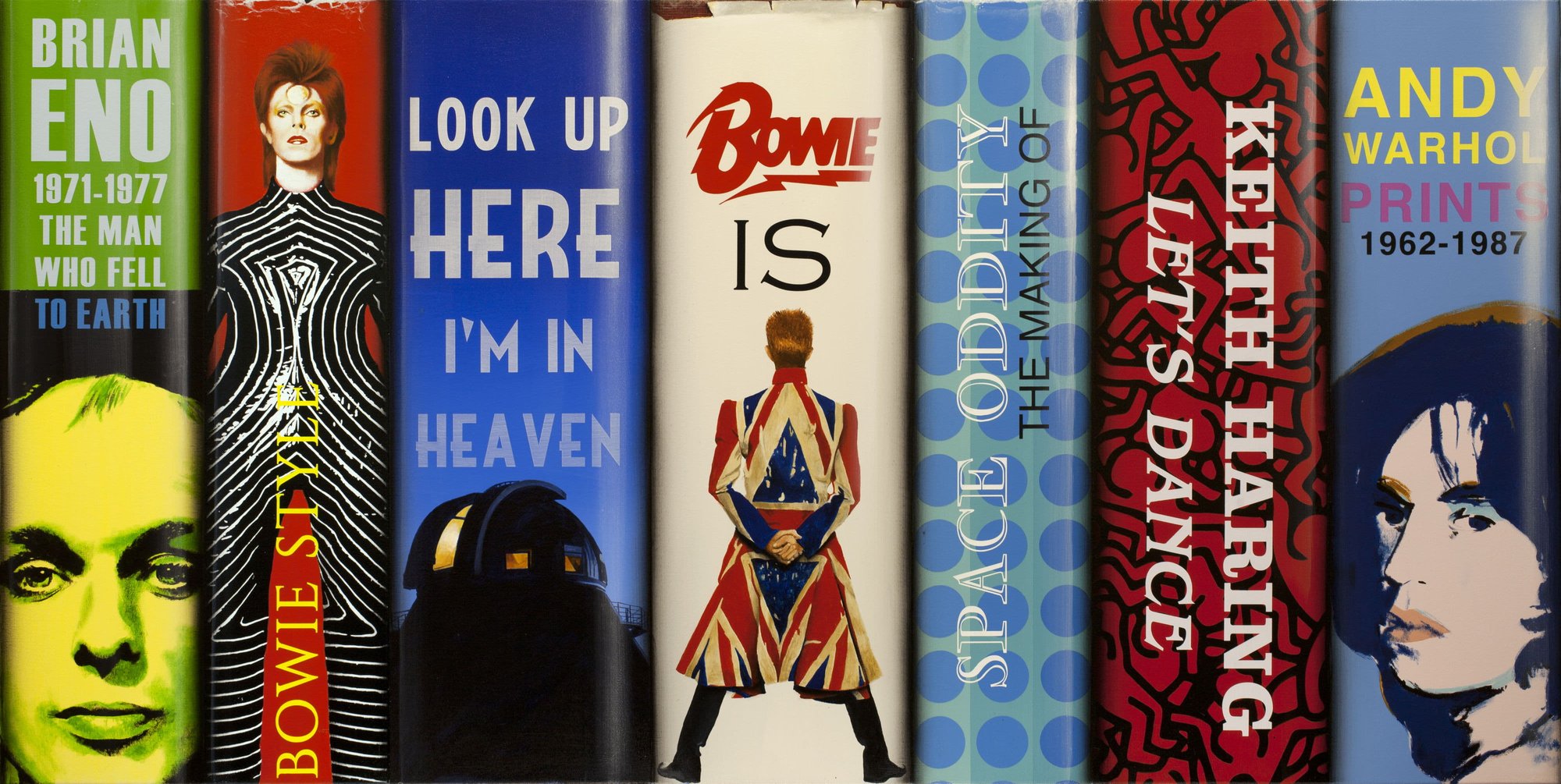
.jpg?width=2000&name=Beliveau%20-%20Vanitas%2014.07.24%20(Matisse-Klimt).jpg)
.jpg?width=2000&name=Beliveau%20-%20Vanitas%2017.12.06%20(Modern%20Art).jpg)
